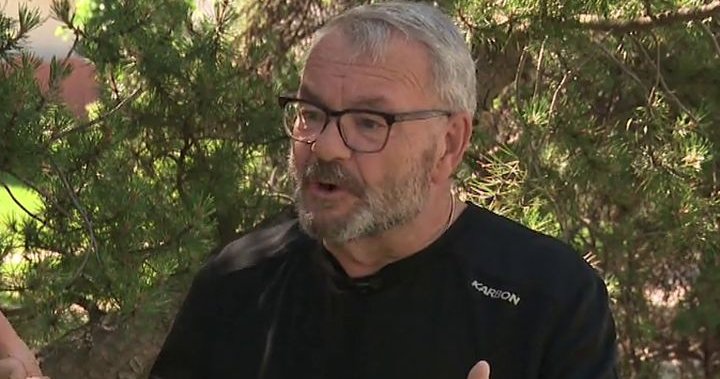Edmonton’s contentious housing infill strategy faces renewed scrutiny as former city councillor Tony Caterina joins the debate, signaling his intention to make the issue central to his mayoral campaign. The timing couldn’t be more significant as housing affordability reaches crisis levels across the capital region.
At a Thursday press conference in the Highlands neighbourhood, Caterina criticized the city’s current approach, claiming current infill policies are destroying community character while failing to meaningfully address housing shortages.
“I’ve spoken with countless residents who feel blindsided by the scale and pace of neighbourhood change,” Caterina said, standing before a recently completed fourplex that towers over adjacent bungalows. “We need housing solutions that respect the fabric of our communities.”
The debate intensified last month when city council approved zoning changes allowing more diverse housing types in previously single-family neighbourhoods. These changes, part of Edmonton’s District Planning initiative, permit multi-unit developments without requiring additional public hearings—a streamlining measure advocates call necessary but critics view as bypassing community input.
Councillor Andrew Knack, a vocal supporter of the infill strategy, defended the changes in a recent interview with CBC Edmonton. “When we talk about housing, we’re talking about people’s lives. Edmonton’s population continues growing while housing production hasn’t kept pace. The math simply doesn’t work without adding density.”
Housing data supports Knack’s concerns. According to the Realtors Association of Edmonton, average home prices increased 7.8% year-over-year while rental vacancies dropped to 3.1%—the lowest in nearly a decade. Meanwhile, Edmonton welcomed over 37,000 new residents in 2023, according to municipal census data.
For communities like Highlands, Ritchie, and Strathcona, the changing streetscape represents both opportunity and threat. Longtime Highlands resident Marianne Thompson expressed mixed feelings while watching construction across her street.
“I understand we need more housing—my own children can’t afford to live in the neighbourhood they grew up in,” Thompson said. “But some of these new buildings block sunlight in my garden and create parking headaches. I wish there had been more conversation about scaling and design.”
The infill tension reflects a larger national conversation. The federal government’s Housing Accelerator Fund has incentivized municipalities to relax zoning restrictions, with Edmonton receiving $158.4 million last November to support its housing strategy. The funding came with expectations to approve at least 20,000 new homes by 2027.
Mayor Amarjeet Sohi has maintained that allowing gentle density throughout the city is critical to addressing both climate goals and housing needs. “Edmonton must grow up, not just out,” Sohi stated at council’s last meeting. “Our responsibility is to future generations who need affordable places to live.”
But Caterina’s campaign challenges this vision. “Current policies create winners and losers,” he argued. “Developers win while established neighbourhoods lose predictability and voice.”
Urban planning experts offer more nuanced perspectives. Dr. Sandeep Agrawal, Director of the School of Urban and Regional Planning at the University of Alberta, notes that Edmonton’s approach actually lags behind other major Canadian cities.
“The evidence shows that gentle density—duplexes, garden suites, townhomes—helps stabilize older neighbourhoods by bringing in families and supporting local businesses,” Agrawal explained. “However, community anxiety is legitimate and requires meaningful engagement, not dismissal.”
The reality on the ground shows why this debate matters. Emma Lawrence, a 34-year-old healthcare worker, recently purchased a half-duplex in Ritchie—something that wouldn’t have existed under previous zoning rules.
“I looked for three years and watched prices climb out of reach,” Lawrence said. “This duplex was the only way I could afford to live in a central neighbourhood near transit and my workplace.”
With municipal elections approaching in October 2025, housing policy will likely remain at the forefront of political discussions. Caterina’s entry into the mayoral race signals that infill development could become a wedge issue, potentially reshaping Edmonton’s approach to growth and community planning.
As council prepares for further implementation of its District Planning framework this spring, residents across Edmonton are watching closely—some with hope for more attainable housing options, others with concern for the neighbourhoods they’ve long called home.
The coming months will test whether Edmonton can balance its growing pains with the character that makes its mature neighbourhoods special in the first place.






